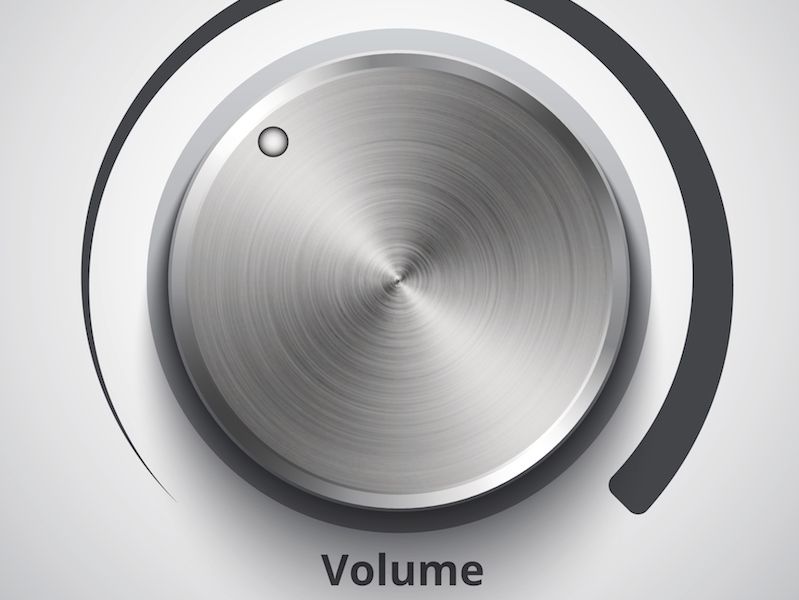
You ever go to the beach and see one of those “Beware of Shark” signs? It’s easy to realize that you shouldn’t disregard a caution like that. You might even rethink swimming at all with a sign like that (if the sign is written in big red letters that’s particularly true). But people usually don’t heed cautions about their hearing in the same way for some reason.
Current studies have found that millions of people neglect warning signs regarding their hearing (there’s no doubt that this is a global challenge, though these studies were specifically done in the United Kingdom). Part of the issue is awareness. It’s pretty intuitive to be scared of sharks. But most people don’t have an overt fear of loud noises. And the real question is, what’s too loud?
Loud And Dangerous Sound is Everywhere Around us
Your hearing isn’t just in peril at a rock concert or construction site (not to downplay the hearing hazards of these situations). There are potential hazards with many every-day sounds. That’s because the duration of sound is as hazardous as the volume. Even lower-level sounds, such as dense city traffic, can be dangerous to your hearing when experienced for more than a couple of hours.
Read on to find out when sound becomes too loud:
- 30 dB: Everyday conversation would be at this volume level. You should be just fine at this volume for an indefinite time period.
- 80 – 85 dB: An air conditioner, heavy traffic, and lawn equipment are at this volume. After around two hours this level of sound becomes harmful.
- 90 – 95 dB: A motorcycle is a good example of this sound level. 50 minutes is enough to be dangerous at this volume.
- 100 dB: An approaching subway train or a mid-sized sports event are at this sound level (depending on the city, of course). 15 minutes of exposure will be enough to be dangerous at this volume.
- 110 dB: Do you ever crank the volume on your earpods up to max? That’s normally around this sound level on most smartphones. This amount of exposure is dangerous after only 5 minutes of exposure.
- 120 dB and over: Any sound over 120 dB (think loud rock show or extremely large sporting events) can produce instant damage and pain in your ears.
What Does 85 Decibels Sound Like?
Generally, you’re in the danger zone when you’re experiencing any sound 85 dB or louder. The issue is that it’s not always obvious just how loud 85 dB is. A shark is a tangible thing but sound isn’t so tangible.
And hearing cautions often go ignored for this reason when the sound environment isn’t loud enough to cause pain, this is particularly true. There are a couple of possible solutions to this:
- Suitable training and signage: This especially pertains to workspaces. Training and signage can help reinforce the significant risks of hearing loss (and the benefits of hearing protection). Signage could also inform you just how loud your workplace is. Training can tell employees when hearing protection is necessary or suggested.
- Get an app: There isn’t an app that will immediately safeguard your ears. But there are several free apps that can function as sound level monitors. It’s hard to assess what 85 dB feels like so your ears can be damaged without you even knowing it. The solution, then, is to have this app open and monitor the noise levels around you. Utilizing this strategy will make it more instinctual to identify when you are moving into the “danger zone”. (Or, the app will simply let you know when things get too noisy).
If You’re in Doubt, Protect Yourself
No app and no signage will ever be 100%. So when in doubt, take the time to safeguard your ears. Noise damage, over a long enough time period, can result in hearing loss. And these days, it’s never been easier to injure your ears (all you need to do is turn your earpods up a little too loud).
You shouldn’t increase the volume past half way, especially if you’re listening all day. If you keep turning it up to hear your music over background sound you need different headphones that have noise cancellation.
That’s why it’s more essential than ever to identify when the volume becomes too loud. And to do that, you need to increase your own awareness and knowledge level. It isn’t hard to limit your exposure or at least use hearing protection. But you have to know when to do it.
Nowadays that should also be easier. Especially now that you know what to be aware of.
Think you might have hearing loss? Make an appointment.